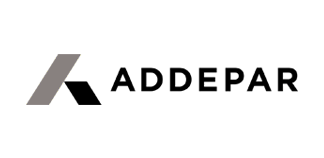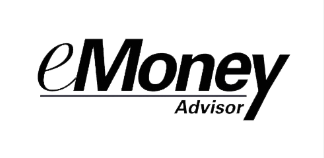457 plans: The retirement option for nonprofit and government workers
November 2021
A 457 plan is a type of deferred compensation plan for workers in the government and nonprofit sectors. It allows employees to set aside a portion of their earnings, push back taxes on that income, and grow their money in the process.
“It’s part of the retirement plan family,” says Frank Murillo, partner and managing director at Snowden Lane Partners. “On the surface, think ‘401(k)’ for government and nonprofit employees.”
Do you work for a non-profit or government organization? Here’s what you need to know about 457 plans.
How does a 457 plan work?
With a 457 plan, you defer part of your income, use it to invest in annuities and mutual funds, and grow those earnings until a later date. Only nonprofit and governmental organizations can offer 457 plans, though they can be used in tandem with other retirement accounts, including 401(k)s and 403(b)s.
Contributions on 457 plans are largely made by the participant using paycheck deductions, but employers have the option to contribute funds as well. Either way, there’s one set contribution limit across both buckets.
Generally speaking, participant contributions are tax-deferred, meaning you pay taxes when you withdraw funds later on. With some governmental 457(b)s, which is one type of 457 plan we’ll cover later on, you may have the option to designate Roth contributions, which are made using after-tax dollars.
One standout advantage of 457 plans is that you can begin withdrawing your 457 funds as soon as you no longer work for the plan’s sponsoring organization. This is quite different from other retirement plans, such as IRAs and 401(k)s, which require you to be 59 ½ before you can withdraw from your account.
–
Quick tip: If you have a 457 plan, you’ll have to take Required Minimum Distributions (RMDs) from your account starting at age 72. The exact annual amount varies based on your age, your balance, and other factors. Use this calculator to determine what you may owe.
–
457(b) contribution limits
The contribution limits for a 457(b) depend on your age. Once you hit 50 or when you’re nearing retirement, you may be able to contribute significantly more depending on what you contributed in previous years.
Here’s how those contributions look:
|
Age |
Contribution limit |
|
< 50 |
100% of your salary or $19,500, whichever is less |
|
50 or older |
$26,000 ($19,500 + $6,500 in catch-up contributions) |
|
Within three years of retirement age, as specified by the plan |
$39,000 or the base limit ($19,500), plus the amount of your unused base limit in prior years, whichever is less |
–
Quick tip: The catch-up contributions allowed for participants 50 or older are only allowed if you have a governmental 457(b). If you’re enrolled in a nonprofit 457(b), your limit will be $19,500.
–
Types of 457 plans
There are two types of 457 plans: the 457(b) and the 457(f).
- 457(b): These are what the IRS refers to as “eligible” deferred compensation plans. They’re subject to all IRS contribution limits and taxation rules, and both employers and participants can contribute to them. There’s a 457(b) option for governmental employers, as well as a 457(b) for nonprofits and tax-exempt organizations.
- 457(f): These plans are also for nonprofits and government agencies, but they don’t have to adhere to the IRS contribution limits. They’re also fully funded by the employer, allowing employers to tie the benefit to performance, service duration, or other metrics. According to the IRS, these are sometimes called “golden handcuff” plans.
“457(b) plans work very similar to a 401(k) or 403(b), where the elective deferral amount is funded on a payroll-by-payroll basis,” says Brian Haney, founder and vice president at The Haney Company. “For 457(f) plans, these are far more discretionary and often funded in a lump sum depending on when the employer chooses to fund them.”
Pros and cons of a 457 plan
As with any investment account, the 457 plan comes with both drawbacks and advantages. One upside: They allow you to reduce your taxable income and defer taxes to a later date. If you think you will be in a lower tax bracket upon retirement, this can be financially advantageous.
They can also be used in tandem with other accounts — another major perk.
“They become extremely helpful and valuable vehicles to allow for higher earners to further defer income towards retirement,” Haney says. “Many highly compensated professionals max out their 401(k)s and 403(b)s and could use additional resources to save more.”
On the downside, some 457 plans don’t allow rollovers to other retirement accounts. They also come with RMDs, and any employer contributions count toward the participant’s annual limit.
|
Pros |
Cons |
|
|
457(b) vs. 403(b)
It’s easy to confuse 457(b) plans with 403(b) plans, as both are offered in the nonprofit sector. In some cases, employers may even offer both plans simultaneously.
Despite this, the two are vastly different retirement options. For one, employer contributions and participant contributions come with different limits on 403(b)s. On these plans, both contributions can total up to $58,000 or 100% of the employee’s salary per year (whichever is less).
Rollovers are also permitted on all 403(b)s, but only sometimes on 457 plans, and 403(b)s come with a 10% penalty if funds are withdrawn before 59 ½. With 457(b)s, you can withdraw as soon as you no longer work for the company.
Here are all the differences you’ll want to consider with these two retirement options:
|
457 plan |
403(b) |
|
|
About Snowden Lane Partners
Snowden Lane is a nationally branded, open-architecture, hybrid registered investment advisor and
broker-dealer that provides wealth advisory services to high net-worth individuals, families, and
institutional clients.
Snowden Lane is led by an experienced team of industry executives, including Lyle LaMothe, Chairman
of the Board of Managers, Rob Mooney, Managing Partner & CEO, and Greg Franks, Managing Partner,
President & COO, who are dedicated to building a client-focused, nationally branded, boutique wealth
advisory partnership.
Snowden Lane is headquartered in New York City and operates an SEC registered investment adviser
and a broker-dealer. Snowden Lane provides a multi-custodian, multi-currency platform, with
aggregated performance reporting and leading analytical tools for clients and advisors. It further
provides full operational, finance, compliance, human resources, and financial advisor transition support
to its financial advisors.
Contact:
Kevin Santo
Water & Wall
516-506-8560
kevin@waterandwall.com




